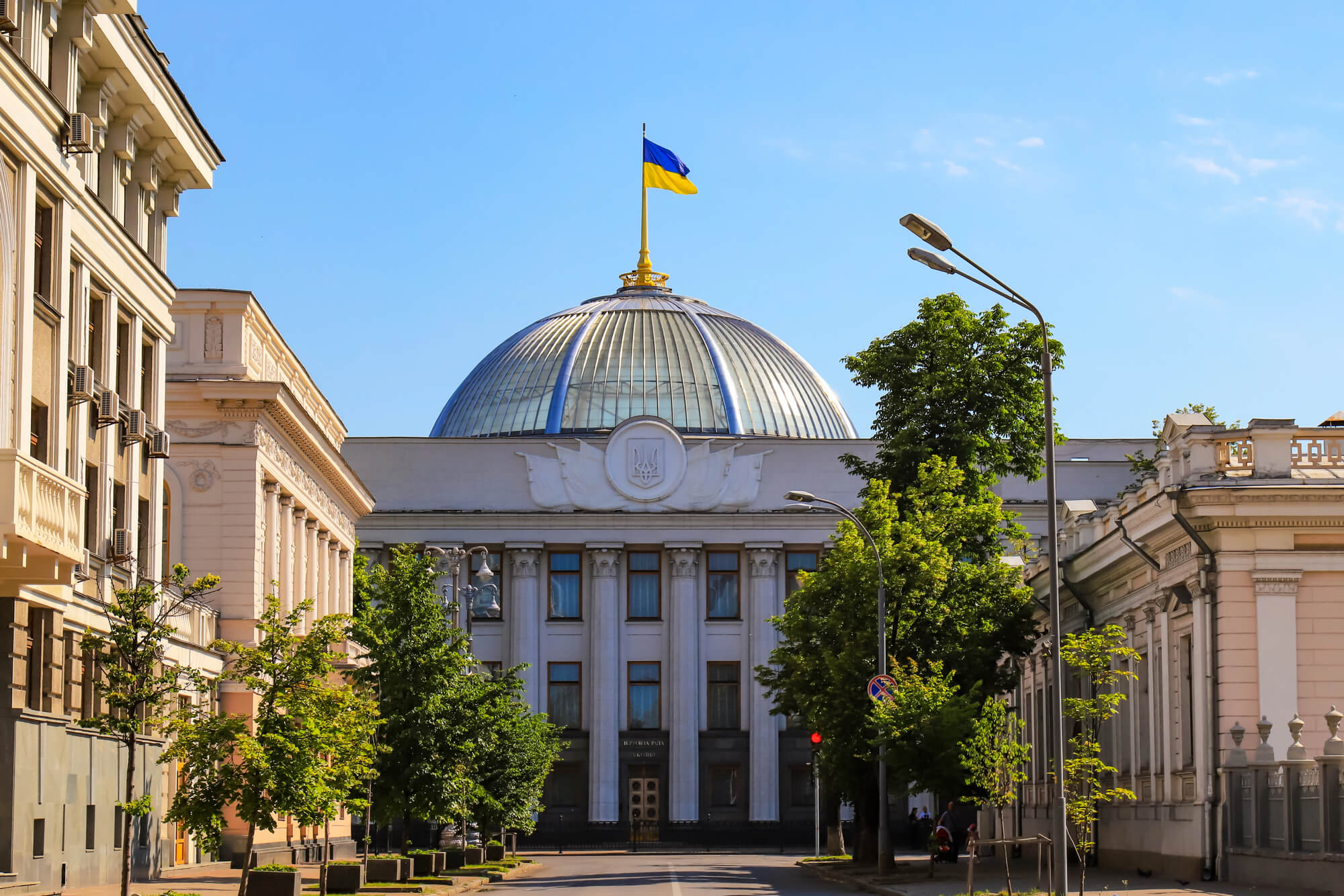Russia’s full-scale military aggression against Ukraine, which began last year, has had consequences across all spheres of society, including the education system. In addition to direct attacks and the destruction of infrastructure facilities and educational institutions, the country has experienced significant population migration, both within its borders and abroad. According to State Border Service of Ukraine data, over 4.8 million people left Ukraine between February 24 and the second half of May 2022. As of May 16, 2023, European countries recorded a total of over 8 million refugees (this figure is an estimate, accounting for those who have already returned to Ukraine). While there is no exact data on the number of forcibly displaced persons, the Ministry of Education and Science reports that more than half a million students in general secondary education institutions have gone abroad.
Furthermore, like at the time of the coronavirus pandemic, Ukrainian school and university students are currently predominantly receiving their education through distance or hybrid learning formats. On the one hand, this arrangement enables Ukrainian students to continue their studies even while residing abroad. On the other hand, the shift to remote learning has intensified competition among higher education institutions (HEIs), potentially leading to an improvement in the overall quality of education. This is because the physical location factor may become less influential for prospective students if the remote educational delivery format is maintained. However, online education often falls short in terms of quality and fails to provide secondary school and university students with the necessary social skills.
U-Report, in partnership with Vox Ukraine, conducted an online survey that involved 6,183 participants between April 25 and May 9, 2023. The survey sought responses regarding participants’ current status (high school student, university student, employee), educational preferences, higher education plans, and moods toward migration abroad. It is important to note that the sample we obtained is not representative, as the survey relied solely on chatbots on platforms such as Facebook, Telegram, and Viber.
Based on the gathered data, we tried to examine potential regional variations in the selection of higher education specialty and higher education institutions by Ukrainian secondary school students, as well as explore the overall migration moods among Ukrainians.
We utilized the survey data to also explore what is crucial to Ukrainian secondary school and university students when selecting educational institutions and academic specialties, as well as their intentions to pursue further education upon completing secondary school.
Respondent’s portrait
The survey encompassed respondents from various age groups, including schoolchildren under 14 and individuals over 35. Most respondents in each region of Ukraine were employed. The proportion of secondary school students among the respondents varied across regions, ranging from 6.2% in Kyiv to 20.1% in northern Ukraine.
The majority of secondary school students aspiring for higher education varied across regions, ranging from 80.2% in the East to 93.2% in the West of Ukraine.
Figure 1. Distribution of respondents by status and plans for higher education, %
The U-Report survey in partnership with Vox Ukraine. NB The distribution of answers to the question “Are you planning to study further?” is provided solely for secondary school students.
As we delve further into the analysis of future higher education plans in subsequent sections of this article, particular attention will be given to the responses of secondary school students intending to pursue their studies in both pre-higher education and higher education institutions.
The analysis of migration attitudes encompasses all respondents, irrespective of their occupation.
For reference. The distribution of regions by macro-regions is carried out as follows. West: the Volyn, Zakarpattia, Ivano-Frankivsk, Lviv, Rivne, Ternopil, and Chernivtsi regions. Center: the Vinnytsia, Kirovohrad, Poltava, Khmelnytskyi, and Cherkasy regions. North: the Zhytomyr, Kyiv, Sumy, and Chernihiv regions. East: the Dnipropetrovsk, Donetsk, Zaporizhzhia, Luhansk, and Kharkiv regions. South: Autonomous Republic of Crimea, the Mykolaiv, Odesa, and Kherson regions. The city of Kyiv: the city of Kyiv.
Plans for higher education
Overall, among respondents who are high school students intending to pursue HEI and college education, there is a predominant interest in fields related to management and administration, social-behavioral sciences, and humanities sciences. Conversely, fewer respondents express a desire to study technical and natural sciences, although this discrepancy is relatively smaller in Kyiv and the northern regions of Ukraine (Figure 2). For instance, out of the 53% of respondents in Kyiv aiming for social and humanitarian disciplines, 32% are interested in technical specialties. In contrast, in the Eastern regions, this ratio is 60% and 13%, respectively (the remainder remain undecided). Furthermore, only 11% of respondents in Kyiv have not yet decided on their specialization, while in the other regions, this percentage stands at approximately a quarter of the respondents.
Figure 2. Distribution of respondents by potential academic specialties, %
The U-Report survey in partnership with Vox Ukraine. NB 100% is the distribution of responses in each macro-region.
When examining specific specialties, it becomes evident that the humanitarian field, encompassing Ukrainian and foreign philology, history, and other related disciplines, remains a priority for applicants, particularly in the western and southern regions of Ukraine, with over 17% of respondents in each region expressing an interest in this area. Additionally, this field is in relatively high demand among other fields and specialties in the central regions, with 13.8% of respondents mentioning it.
The war has not only exacerbated issues within the cultural and art sphere (such as the destruction of cultural landmarks and the suspension of concert activities, etc.) but also transformed culture into a secondary battleground. It is presumed that this heightened awareness of the significance of the cultural sphere has influenced the educational preferences of applicants. Furthermore, admission to art majors does not necessitate the NMT results, as acceptance is based on a creative competition. Additionally, the interests of young people in social networks, the prominence of bloggers, and their earnings also play a role.
According to data from the State Statistics Service of Ukraine, there was a 21% rise in admissions to pursue a bachelor’s degree in the field of “Culture and Arts” in 2022, expanding their share from 5.3% to 5.9%. This growth occurred against the backdrop of a 9% overall increase in the number of students enrolled in bachelor’s degree programs across Ukraine.
According to the U-Report survey conducted in partnership with Vox Ukraine, there is an indication that the demand for the “Culture and Art” specialty may continue. Specifically, in Kyiv and the eastern regions of Ukraine, a relative majority of respondents plan to pursue this field, with 21.1% and 14.9%, respectively. Art specialties have gained prominence over other options only in these two macro-regions. In the western region of Ukraine, the “Art” specialty also ranks among the top three preferences of respondents, following humanities (philology, history, etc.) and social sciences (economics, sociology, political science, etc.), with 11.7% of respondents selecting this field. However, in the southern region of Ukraine, the demand for this specialty is lower, with 5.7% of respondents expressing interest in it.
Additionally, computer science and IT emerged as one of the top three priority specialties among respondents. This field garnered the highest interest in the northern regions, with 12.1% of respondents in that macro-region choosing it. Furthermore, computer sciences exhibit demand in Kyiv (13.2%) and the eastern regions (11.9%). This can be attributed to the presence of well-equipped universities and the potential for employment in Ukraine’s major IT clusters. Industry experts note that despite the ongoing war, Kyiv and the northern regions still have the highest concentration of IT specialists. In the western regions, however, less than 10% of respondents expressed a desire to pursue an IT education, despite Lviv being a leading hub for higher education institutions in this field. Although the full-scale war has fundamentally impacted the IT market in Ukraine, making it more challenging for candidates to secure desired opportunities, IT specialists will remain crucial in various areas of Ukraine’s post-war reconstruction.
Having well-equipped laboratories and practice facilities, along with the presence of renowned scientific schools such as the one at Taras Shevchenko National University of Kyiv, and the opportunity to pursue scientific and career paths within scientific and research institutions, which are predominantly located in the capital, may also play a role in the higher percentage of individuals selecting natural sciences as their preferred field of study in Kyiv (13.2%) and the minimum share in the western (2.9%) and the eastern region (1.5%).
At the same time, respondents from the East in our sample do not express intentions to pursue engineering specialties even though Ukraine’s iron and steel and extractive industry enterprises, while specialized higher education institutions are also placed here, particularly in the city of Dnipro. Similarly, in the field of “International Relations,” none of the respondents from Kyiv plan to enroll in it, despite the city being home to the Institute of International Relations at Taras Shevchenko National University, which is a key institution in this field.
Figure 3 provides a comparison of the respondents currently pursuing higher education. It reveals that the majority of these students are enrolled in humanitarian specialties, which aligns with the preferences expressed by future graduates. However, there are notable differences between the plans of male and female high school students and the current students. In the regions (South, West, and North), there is a higher proportion of students studying natural sciences compared to Kyiv. A similar pattern emerges in the field of computer science and IT. In Kyiv, the largest share of respondents currently pursuing higher education are enrolled in humanitarian specialties, accounting for nearly 20% of the responses.
Figure 3. Distribution of university student respondents by academic specialty, %
The U-Report survey in partnership with Vox Ukraine
When choosing their place of study, prospective applicants are primarily influenced by the prestige of the specialty and the educational institution’s reputation, as shown in Figure 4. It is worth noting that applicants in Kyiv tend to be less concerned about the competition for securing high-paying and prestigious professions. Conversely, more than a quarter of respondents in the South and North regions view a small competition for budget-funded spots as an important consideration.
Figure 4. Distribution of secondary school student respondents by factors steering them when choosing a place of study, %
The U-Report survey in partnership with Vox Ukraine. NB The question allowed for the possibility of choosing several answer options.
The survey findings indicate that potential applicants from the regions, especially the central and southern regions, are more willing to relocate to other cities in order to pursue their studies. On the other hand, 27% of respondents from Kyiv expressed that the location of a university or college in their locality is an essential factor for them.
Less frequently, applicants rely on the advice of their parents and friends, as well as the presence of acquaintances at a specific educational institution, when making their decisions.
Migration moods
Regardless of region, most respondents express their intention to remain in Ukraine (Figure 5). These findings are comparable to another survey conducted between October 2022 and January 2023, which revealed that 66% of respondents did not wish to travel abroad, compared to 49% in 2021.
At the same time, respondents located in regions near the frontline zones (southern and eastern regions), as well as in the capital and northern regions, which are subject to air attacks by the aggressor country, display a higher inclination to permanently relocate abroad rather than opting for temporary study or work opportunities. Conversely, there is still a tendency to seek employment opportunities abroad in the western regions and Central Ukraine.
Figure 5. Distribution of respondents according to plans to go abroad (excluding tourist trips), %
The U-Report survey in partnership with Vox Ukraine
The survey results indicate that Europe remains the primary destination of choice for those intending to go abroad, with 69% of respondents in the Central region to 75% in the West of Ukraine expressing this preference (Figure 6). In the Western region, the higher proportion of individuals willing to go to European countries may be attributed to the region’s immediate proximity to Europe. North America takes the second spot among the preferred destinations, selected by approximately one-third of respondents, with the highest percentage in the South and relatively lower rates in the East. The third spot is occupied by countries in Asia, excluding the post-Soviet region.
Figure 6. Distribution of respondents by preferred regions of travel and language proficiency, %
The U-Report survey in partnership with Vox Ukraine. NB The questions allowed for selecting several answer options.
The fewest respondents express a preference for leaving to countries of the former USSR. The share among those planning to go is from 1% in the South to 3.6% in the East. To provide context, in 2018, only 0.5% of Ukrainians planned to leave for Russia, and among those who wanted to leave, the figure was 7%. The relatively larger proportion of individuals in the East who prefer to go to post-USSR countries may be attributed to the presence of family ties. A survey conducted at the end of 2021 showed that 67% of respondents in the East have relatives in Russia.
The survey findings indicate that in all regions, a majority of respondents—ranging from 67.4% in the Central region to 83.2%—claim to have an average or high level of proficiency in English, with the highest percentage in Kyiv. Conversely, those who do not speak any foreign languages or have only elementary-level command make up 15.1% in Kyiv to 29.7% in Central Ukraine.
The respondents who expressed a desire to go to Europe most frequently mentioned Polish as the language they speak are from the western regions of Ukraine. On the one hand, this is accounted for by the territorial proximity. On the other hand, it is possible to obtain free higher education (subject to certain conditions), which includes proficiency in the state language (Ukrainian and Polish are related languages, unlike, say, German. Even prior to the full-scale invasion, Ukrainians constituted a significant proportion of international students in Poland.
Furthermore, the survey reveals that Kyiv is the most linguistically diverse region compared to others, with respondents more frequently indicating proficiency in multiple languages.
Previous surveys have highlighted that the primary motivations for learning languages among Ukrainians are the desire for free communication with people who speak other languages and the opportunity to secure higher-paying job opportunities. It is worth noting that according to surveys conducted by the Rabota.ua platform, knowledge of the English language is a requirement in 62% of job vacancies.
Conclusions
The U-Report survey conducted in partnership with Vox Ukraine reveals that a majority of secondary school students in each macro-region of Ukraine have plans to pursue higher education. The results indicate a notable bias toward choosing humanitarian education in terms of specialties. In the capital city (Kyiv), the gap is the smallest – 53% express an interest in studying management, social-behavioral sciences, and humanitarian fields, while 32% aim to acquire a technical or natural science specialty. In the Eastern region of Ukraine, it is 60% and 13%, respectively, with the remaining respondents being undecided about their specialty choices.
Balancing the ratio in different regions of Ukraine can be facilitated by an active and extensive information campaign. It is crucial for potential employers and HEIs to raise awareness among applicants about the prospects of employment in technical fields and provide insights into the admission process for these areas of study. This becomes especially relevant considering the increasing demand for such specialties during the post-war reconstruction of Ukraine. Communication events should go beyond traditional applicant days and encompass activities like enterprise tours, master classes, workshops, internships, and more. Students themselves emphasize the importance of collaboration between universities and businesses.
For instance, the admission rules for 2023 in Ukraine include providing state support for a list of specialties, primarily in technical fields. NMT results are not required for contract enrollment, and an industry coefficient of 1.02 is applied to priorities 1 and 2 for budget-funded education in these fields. STEM students are offered a wide range of opportunities, such as grants, internships, and exchange programs, both in Ukraine and abroad.
Furthermore, development prospects that can potentially benefit all those involved in the educational process include fostering international collaborations between HEIs for double diploma programs with foreign counterparts, engaging business and international donors, and expanding the implementation of dual education models. The cooperation between SoftServe and Ukrainian universities serves as a notable example in this regard.
The analysis of the survey results also revealed that a majority of male and female secondary school students in Kyiv have already made decisions about their future specialties. Merely 10% of respondents in the capital have not yet chosen a potential profession, with this share being a quarter of respondents in the regions, particularly in the East and West of the country.
When selecting a place of study, prospective applicants are primarily influenced by rational factors such as the evaluation of the specialty (its prestige and future prospects) and the educational institution’s reputation. However, applicants in Kyiv demonstrate less concern about competition, while over a quarter of respondents in the South and North consider the availability of budget places with less competition. Advice from parents, friends, and the presence of acquaintances at the educational institution plays a lesser role in the decision-making process.
As for migration attitudes, the majority of respondents express the intention to remain in Ukraine, although those situated in regions near the frontline zones, as well as the capital and northern regions, show a higher inclination towards permanent migration abroad rather than temporary stays for study or work purposes.
Attention
The author doesn`t work for, consult to, own shares in or receive funding from any company or organization that would benefit from this article, and have no relevant affiliations









